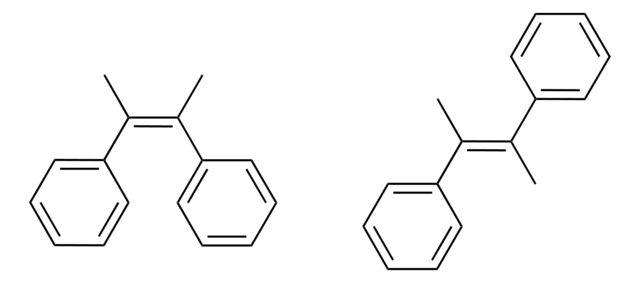725684
Poly(ethylene glycol) dimethacrylate
average MN 10,000, cross-linking reagent polymerization reactions, methacrylate, ≤1, 500 ppm MEHQ as inhibitor (may contain)
동의어(들):
Polyethylene glycol, PEG dimethacrylate
크기 선택
About This Item
추천 제품
제품명
Poly(ethylene glycol) dimethacrylate, average Mn 10,000, contains MEHQ as inhibitor
양식
powder
분자량
average Mn 10,000
포함
MEHQ as inhibitor
≤1,500 ppm MEHQ as inhibitor (may contain)
반응 적합성
reagent type: cross-linking reagent
reaction type: Polymerization Reactions
bp
>200 °C/2 mmHg (lit.)
전이 온도
Tm 56-61 °C
Mw/Mn
≤1.1
Ω-끝
methacrylate
α-끝
methacrylate
폴리머 구조
shape: linear
functionality: homobifunctional
저장 온도
−20°C
SMILES string
OCCO.CC(=C)C(O)=O
InChI
1S/C10H14O4/c1-7(2)9(11)13-5-6-14-10(12)8(3)4/h1,3,5-6H2,2,4H3
InChI key
STVZJERGLQHEKB-UHFFFAOYSA-N
유사한 제품을 찾으십니까? 방문 제품 비교 안내
제조 메모
Storage Class Code
11 - Combustible Solids
WGK
WGK 1
가장 최신 버전 중 하나를 선택하세요:
이미 열람한 고객
문서
Scaffold patterning with poly(ethylene glycol)-based hydrogels for cell presence in 2D and 3D environments on photoactive substrates.
Hydrogel-based biomaterials for cell delivery and tissue regeneration applications are discussed.
In the past two decades, tissue engineering and regenerative medicine have become important interdisciplinary fields that span biology, chemistry, engineering, and medicine.
Progress in biotechnology fields such as tissue engineering and drug delivery is accompanied by an increasing demand for diverse functional biomaterials. One class of biomaterials that has been the subject of intense research interest is hydrogels, because they closely mimic the natural environment of cells, both chemically and physically and therefore can be used as support to grow cells. This article specifically discusses poly(ethylene glycol) (PEG) hydrogels, which are good for biological applications because they do not generally elicit an immune response. PEGs offer a readily available, easy to modify polymer for widespread use in hydrogel fabrication, including 2D and 3D scaffold for tissue culture. The degradable linkages also enable a variety of applications for release of therapeutic agents.
활성 필터
자사의 과학자팀은 생명 과학, 재료 과학, 화학 합성, 크로마토그래피, 분석 및 기타 많은 영역을 포함한 모든 과학 분야에 경험이 있습니다..
고객지원팀으로 연락바랍니다.





